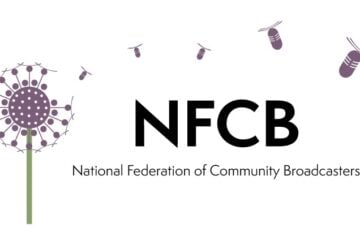Podcast with limited radio airplay sets Kickstarter record

Mars started producing 99% Invisible in his bedroom, but now he works from a studio in his new home. (Photo: Raymond Ahner.)

Mars started producing 99% Invisible in his bedroom, but now he works from a studio in his new home. (Photo: Raymond Ahner.)
Roman Mars is a hard man to find on the radio.
Only 10 terrestrial stations regularly broadcast his Public Radio Exchange–distributed program 99% Invisible, a weekly 15-minute show that explores the world of design through unusual topics such as escalator noise and Trappist beer. His home station, San Francisco’s KALW, slots truncated segments into its Morning Edition broadcasts.
But go online, and Mars is a superstar. The 99% Invisible podcast has been downloaded more than 4 million times since launching in September 2010; it peaked at second place on iTunes’ overall chart in December 2011 after being featured on the Radiolab podcast. It’s attracted big sponsorships from companies such as Facebook. And early this month, the show wrapped a 30-day fundraising campaign for its third season. The goal was $42,000. The final amount raised? North of $180,000.
This wasn’t a pledge drive — at least not in the traditional sense. Nearly all the money came from online crowdfunding platform Kickstarter, launched in 2008 as a tool to raise capital for creative projects. People who contribute to projects are called “backers,” but contributors to Mars’ campaign opted to call themselves “Invisibleurs.” Most of their money will go directly to the production, with Kickstarter taking a 5 percent cut and payment liaison Amazon taking an additional 3 percent to 5 percent in credit-card processing fees.
But the significant part isn’t just that 99% Invisible used Kickstarter. The show smashed the website’s records, becoming the most-funded journalism project in its history.
More than 67,000 creative projects have been launched on Kickstarter, and the site has successfully raised $260 million during its five years of operation. Kickstarter is not the only crowdfunding site for creative endeavors — Indiegogo offers a similar service — but it has quickly become the most iconic one.
Its success hinges on its all-or-nothing setup: Projects must meet their stated funding goal within a set time frame, which creators can designate as anywhere from one to 60 days, or they receive no money. Backers who contribute enough receive goodies from the project creator.
If Kickstarter fundraising sounds similar to a pledge drive, well, it is. But unlike on-air fundraisers, the site allows producers to make direct appeals to listeners without going through local stations.
Mars isn’t the first public-media producer to venture onto Kickstarter. Several other projects, including Heavenly Sight, a radio documentary and multimedia website about blind musicians’ influence on American popular music; the new Spanish-language narrative program Radio Ambulante; and a portable sound booth for KCRW in Los Angeles have earned full funding on the site.
With the 99% Invisible campaign, Mars sought to “give people a broader idea of what success means,” he said. Invisibleurs did just that: Fans gave Mars enough money to hire another producer four days a week, increase production from 30 to 40 episodes per year, redesign the show’s website, produce a video episode and commission PRX to create a smartphone app.
A program that few stations are willing to broadcast is now being featured in smart-set publications such as The Economist and Forbes, accompanied by phrases such as “revolutionizing public radio.” The undercurrent in all the media buzz was that the 99% Invisible campaign demonstrated how public-radio fundraising had failed to evolve and that crowdfunding has the potential to render the pledge drive obsolete.
Yet Mars, a veteran producer, didn’t set out to be disruptive. “I’m not bypassing stations. For the most part, stations are bypassing me,” Mars told Current. As he sees it, 99% Invisible is, at its core, a public-radio program. But its limited presence on radio stations hasn’t affected Mars’ efforts to get funding.
“Honestly, I’ve never had an underwriter ask me how many stations I’m on,” he said. “They ask me how much I get downloaded.”
In addition to running Public Radio Remix, PRX’s 24-hour online stream and experimental broadcast format of curated stories and spoken-word programs, Mars has been the sole full-time employee on 99% Invisible. He used to produce the show out of his bedroom before his recent move into a house with studio space.
Mars ran the entire Kickstarter campaign by himself, commissioning friends who work as designers to create notebooks, T-shirts and posters as his gifts to backers. For donations of $250, Mars sold his voice: He will make a custom recording of the backer’s choosing. This offer was appealing enough that 44 Invisibleurs handed over the big bucks.
But as it turns out, Mars is a public-radio pledge natural. For nearly a decade he’s been pitching for San Francisco’s KALW to wild success.
“He’s broken all the records,” KALW g.m. Matt Martin told Current in an email. “He has this inexplicable ability to be both calm and urgent.”
At KALW, Mars learned how challenge grants and stretch goals work to engage donors. He was able to adapt his technique to the Kickstarter campaign: Debbie Millman, president of the design division at the branding firm Sterling Brands, provided a $10,000 challenge grant through her Design Matters Institute if 99% Invisible could bring in donations from 5,000 individual backers. The campaign closed with 5,600 contributors.
“To me it’s a pledge drive. It’s not all that different,” Mars said. “The reason why I was good at pledge drives was because I treated them like this.”
Yet Mars sees a problem with how traditional pledge drives are run today. “We create this amazing programming that people can’t live without. And during the time period which we are raising money for that thing, we perversely stop doing the thing that we do best. And I find that very odd,” he said.
The future of fundraising?
The show has quickly attracted the attention and concern of other public media fundraisers. On July 12, the morning after Mars’s Kickstarter campaign launched, it became the talk of the annual Public Media Development and Marketing Conference in Seattle. A panel on disruptive technologies considered whether direct audience-fundraising techniques such as those adopted for 99% Invisible will eventually undercut stations’ abilities to solicit listener donations.
During a July 13 session sharing test results of stations’ online donation interfaces, the campaign came up as a potentially game-changing way to get young adults excited about contributing to public media. When a slide featuring the 99% Invisible logo was displayed on the overhead screen, a clap of thunder sounded from outside the conference hotel.
But to Jake Shapiro, PRX c.e.o., it’s not time to fret over crowdfunding’s effects on the traditional public-radio pledge drive. He sees Kickstarter as a simple, albeit transformative, addition to public media’s fundraising toolkit.
“It is not a universal fix, and it’s not going to suddenly solve or displace or render unnecessary the myriad other ways that independent producers and others find to fund their work,” Shapiro told Current.
PRX is helping to spread the word about crowdfunding among indie producers. A recent PRX-hosted webinar featured Mars and Kickstarter staff describing the site and how it works. And, at an invitation from Kickstarter, PRX now hosts a Curator page on its website, linking to handpicked campaigns for interesting public-media projects.
State of the Re:Union, a radio program hosted by Public Radio Talent Quest winner Al Letson and co-distributed by PRX and NPR, was among the first public-media ventures to use Kickstarter, successfully (though just barely) raising $5,000 in 2010 to fund an online video. Letson and his staff are planning another, grander campaign this year to fund the final eight episodes of the program’s third season.
“Seems to me that if I was a station, Kickstarter would make everything a whole lot easier,” Letson told Current. “Social media and crowdsourcing have changed everything. And I think that you can fight against it all you want, but you’re not going to win that fight, and so the best bet is to dive in headfirst.”
But media analyst Mark Ramsey, president of research firm Mark Ramsey Media, doubts Kickstarter will turn out to be the public-media barnstormer other news outlets claimed it to be in the wake of Mars’ success.
“Has Kickstarter taught me anything in this case? No, I don’t think so. It’s taught me that passionate niches will support the shows that cater to those passionate niches,” Ramsey said. “If we look at Kickstarter as the end-all and be-all, then we’re going to make [programming] decisions on the basis of 3,000 to 5,000 people.”
Though he likes the idea of supporting programs directly, rather than through a local station, Ramsey sees “way too much obsession” over Kickstarter in the industry.
“If the show can be funded this way, then you might ask, ‘Does this show need public radio?’ ” he asked.
But that might be precisely the problem, according to Mars. “I worry about the generation after me realizing that they can make great stuff on their own, and if public radio stations don’t listen to them, they’re just going to bypass them and not care,” he said. “And I don’t think public radio will even notice they’re missing out when that happens.”








[…] the meantime, I wanted to share this article from Current, which I learned about by the great folks over at the Public Radio Exchange. […]
[…] Current on 99% Invisible’s Kickstarter success: Podcast with limited radio airplay sets Kickstarter record […]
[…] Roman Mars is a hard man to find on the radio. Only ten terrestrial stations regularly broadcast his Public Radio Exchange–distributed program 99% Invisible, a weekly 15-minute show that explores the world of design through unusual topics such as escalator noise and Trappist beer. His home station, San Francisco’s KALW, slots truncated segments into its Morning Edition broadcasts. But go online, and Mars is a superstar. The 99% Invisible podcast has been downloaded more than 4 million times since launching in September 2010; it peaked at second place on iTunes’ overall chart in December 2011 after being featured on the Radiolab podcast. It’s attracted big sponsorships from companies such as Facebook. And early this month, the show wrapped a 30-day fundraising campaign for its third season. The goal was $42,000. The final amount raised? North of $180,000. […]
[…] Podcast with limited radio airplay sets Kickstarter record | Current.org […]
[…] directly, so it seemed natural to blend the two (a public radio podcast called 99% Invisible took a similar route last year and raised more than […]
[…] so it seemed uncolored to combining the digit (a open broadcasting podcast titled 99% Invisible took a kindred line terminal assemblage and raised more than […]
[…] directly, so it seemed natural to blend the two (a public radio podcast called 99% Invisible took a similar route last year and raised more than […]
[…] — and wound up raising over $300,000. Other successful journalistic projects include the 99% Invisible podcast and a longform science-writing platform called Matter that was ultimately bought by […]